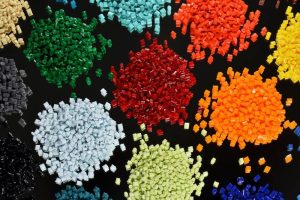Thin wall silicone tubing plays a crucial role across diverse industries, from medical and healthcare to food and beverage sectors, owing to its unique properties and versatility. Understanding the meticulous manufacturing process and stringent quality control measures behind its production is essential for ensuring product reliability and regulatory compliance.
This article provides a comprehensive overview of our manufacturing process, from raw materials and formulation to extrusion techniques, quality control measures, testing protocols, regulatory compliance, and concludes with insights into future trends shaping the industry.
![]()
BUY THIN WALL SILICONE TUBING HERE
Thin Wall Silicone Tubing Manufacturing Process
The manufacturing process of thin wall silicone tubing involves several precise steps to ensure consistency, quality, and compliance with industry standards. Beginning with the careful selection and formulation of silicone polymers and additives, the materials are blended to achieve specific physical and chemical properties required for diverse applications. The following are the main highlights of thin wall silicone tubing manufacturing process:
Raw Materials And Formulation
The production of thin wall silicone tubing begins with a meticulous selection and formulation of raw materials aimed at achieving specific desired properties. This precise combination of materials is essential for meeting rigorous performance requirements across various industries, including healthcare, food processing, and automotive applications.
-
Silicone Polymers
Silicone polymers are fundamental to the manufacturing of thin wall silicone tubing, providing essential properties such as flexibility, biocompatibility, and resistance to extreme temperatures. These polymers are selected based on their molecular structure and desired performance characteristics, ensuring compatibility with regulatory standards and specific application requirements.
The versatility of silicone polymers allows manufacturers to tailor tubing formulations to meet a wide range of technical and regulatory specifications, making them indispensable in industries where reliability and durability are paramount.
![]()
-
Additives and Fillers
In addition to silicone polymers, thin wall silicone tubing formulations incorporate various additives and fillers to enhance performance and durability. Curing agents initiate the cross-linking of silicone polymers during the manufacturing process, ensuring proper curing and dimensional stability of the tubing. Stabilizers are added to improve resistance to heat and oxidation, prolonging the tubing’s operational lifespan in demanding environments.

BUY THIN WALL SILICONE TUBING HERE
Extrusion Process
The extrusion process in thin wall silicone tubing manufacturing involves feeding a prepared silicone compound into an extruder. This compound is then forced through a specially shaped die to produce tubing with uniform dimensions and surface characteristics. Precise control of extrusion parameters such as temperature, pressure, and speed ensures consistent quality and adherence to specified tolerances.
-
Preparing the Extrusion Equipment
Before extrusion begins, meticulous preparation of the equipment is essential. This includes thorough cleaning to prevent contamination, calibration to exact specifications, and verification of all components’ operational integrity. Proper preparation ensures optimal performance and reliability throughout the extrusion process.
-
Silicone Extrusion Techniques
Silicone extrusion techniques for thin wall tubing encompass various methods tailored to achieve specific design requirements. Cold feed extrusion, for instance, is preferred for its ability to create precise dimensions and smooth surface finishes in thinner-walled tubing. Hot feed extrusion, on the other hand, offers advantages in processing thicker-walled tubing and incorporating complex additives. Each technique is selected based on the tubing’s intended use and desired performance characteristics, ensuring versatility and efficiency in manufacturing processes.
Quality Control Measures
Quality control measures are pivotal in ensuring the uniformity and reliability of thin wall silicone tubing. These measures ensure that each stage of production adheres to stringent standards, maintaining the tubing’s dimensional accuracy, mechanical properties, and overall performance.
By implementing robust quality control protocols, manufacturers uphold consistent quality assurance and deliver silicone tubing that meets the exacting demands of diverse industries, including medical devices, automotive, and aerospace.
-
Initial Material Inspection
The Initial Material Inspection phase is critical in the production of thin wall silicone tubing, where raw materials undergo meticulous scrutiny to guarantee their suitability and quality. This process involves rigorous testing to verify factors such as chemical composition, physical properties, and dimensional tolerances. Materials that meet specified criteria proceed to formulation, ensuring that the final product meets stringent performance standards.
-
In-Process Monitoring
In-Process Monitoring plays a vital role in maintaining the quality and consistency of thin wall silicone tubing during manufacturing. This phase involves continuous surveillance of extrusion parameters such as temperature, pressure, and speed. Real-time monitoring allows for immediate adjustments to optimize production conditions and ensure uniformity in wall thickness, diameter, and mechanical properties.
![]()
BUY THIN WALL SILICONE TUBING HERE
Testing Protocols
Testing protocols are essential in ensuring the performance and reliability of thin wall silicone tubing. These protocols encompass various methodologies, designed to assess critical aspects of the tubing’s quality. By rigorously evaluating dimensional accuracy and mechanical properties such as tensile strength, elasticity, and resistance to environmental factors, manufacturers validate compliance with stringent specifications.
-
Dimensional Testing
Dimensional Testing is a pivotal aspect of quality assurance in thin wall silicone tubing production, focusing on precise measurement of key geometric parameters. This includes assessing inner and outer diameters, wall thickness, and overall length to ensure conformity to specified tolerances. Accurate dimensional testing is crucial for verifying compatibility with mating components and ensuring consistent performance in various operational conditions. By meticulously evaluating dimensional characteristics, manufacturers uphold high standards of quality assurance and deliver silicone tubing that meets precise design requirements across industries such as medical devices, pharmaceuticals, and aerospace.
-
Physical Property Testing
Physical Property Testing is integral to assessing the mechanical and chemical characteristics of thin wall silicone tubing. This testing phase evaluates critical properties such as tensile strength, flexibility, hardness, and resistance to chemicals and environmental stressors. By subjecting the tubing to rigorous testing protocols, manufacturers ensure that it meets performance benchmarks and complies with regulatory requirements.
Regulatory Compliance
Regulatory compliance is paramount in the manufacturing of thin wall silicone tubing, ensuring adherence to stringent standards and guidelines. Meeting these standards ensures that the tubing is biocompatible, safe for use in sensitive environments, and capable of withstanding sterilization processes without compromising quality.
-
FDA and Other Standards
Compliance with FDA and Other Standards is essential in the manufacturing of thin wall silicone tubing, particularly for applications in healthcare and pharmaceutical industries. These standards dictate stringent requirements for biocompatibility, sterilization, and material safety, ensuring that the tubing meets regulatory criteria for use in medical devices and pharmaceutical products. Adhering to FDA regulations and other relevant standards is crucial for manufacturers to obtain necessary approvals and certifications, demonstrating the tubing’s reliability and safety in medical and healthcare settings.
-
Certification Requirements
Certification requirements play a pivotal role in validating the quality and performance of thin wall silicone tubing. Certifications confirm that the tubing meets established industry benchmarks and regulatory standards for durability, reliability, and safety. Manufacturers undergo rigorous testing and audits to obtain certifications, which serve as assurances to customers and stakeholders of the tubing’s suitability for specific applications.
BUY THIN WALL SILICONE TUBING HERE
Wrap-Up!
In conclusion, the manufacturing of thin wall silicone tubing involves meticulous processes and adherence to rigorous quality standards at every stage. From initial material inspection to stringent in-process monitoring, manufacturers ensure consistency and reliability in the tubing’s dimensional accuracy, mechanical properties, and performance characteristics. Testing protocols, including dimensional and physical property testing, validate the tubing’s suitability for diverse industrial applications, from medical devices to aerospace components.


